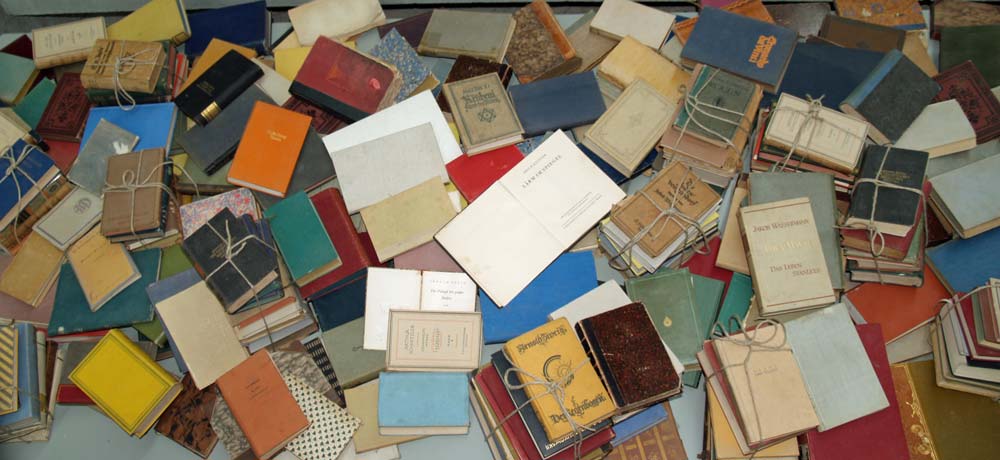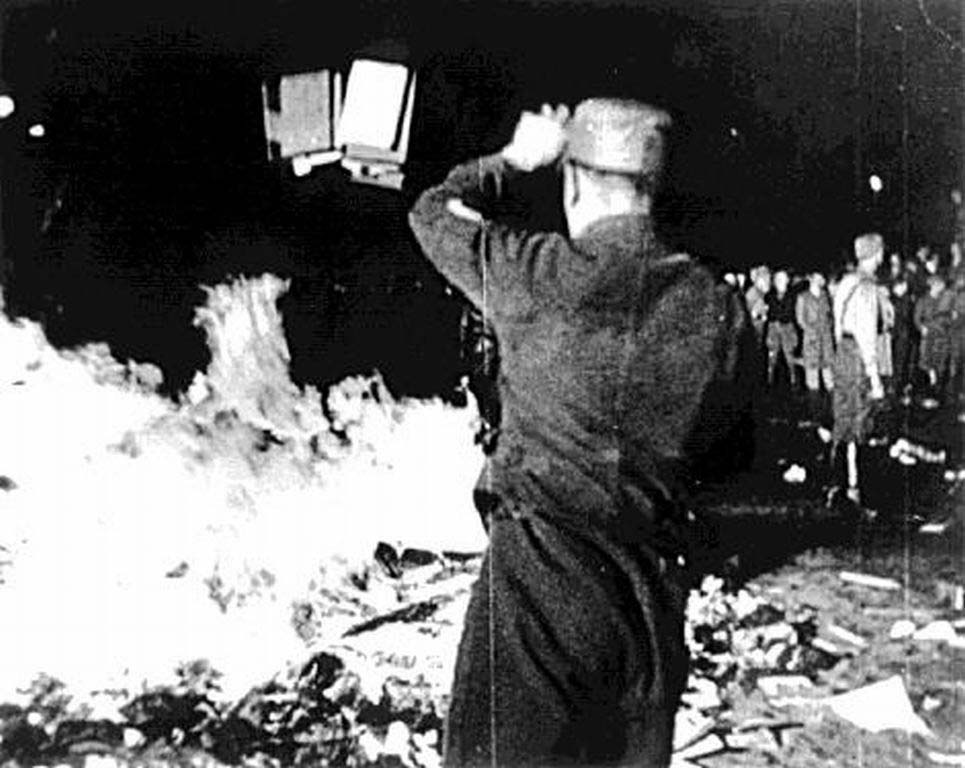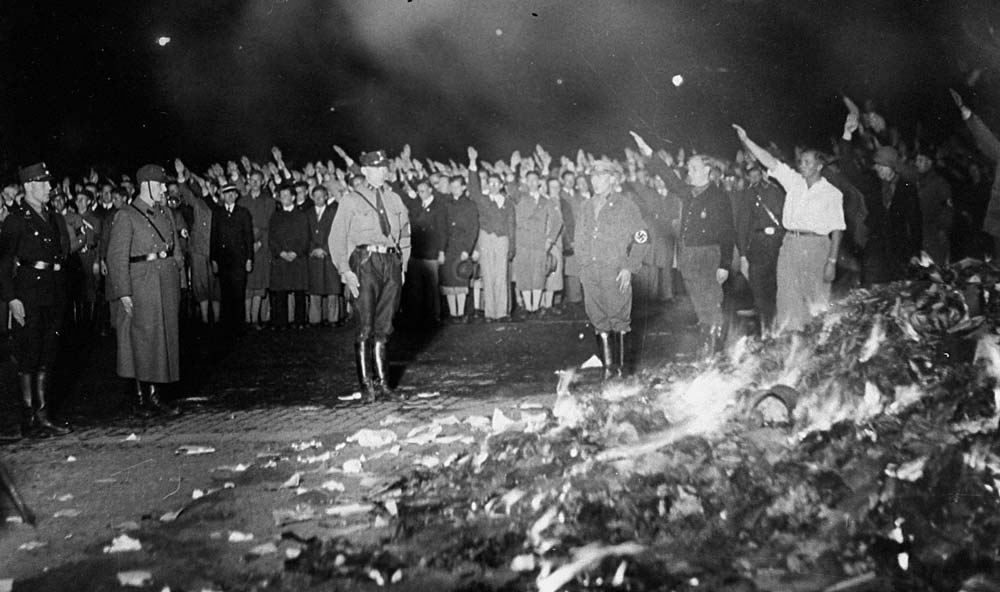One of the first targets of Adolf Hitler and his Nazi organization were books. This began in 1933, shortly after Hitler seized power in Germany. He ordered leaders of the regime to confiscate and destroy any literature deemed subversive to the National Socialist agenda. The elimination of these documents was carried out in a ceremonial fashion. Public book burnings were held for all the citizens to view. These demonstrations were held in both Germany and Austria. All works authored by Jewish, communist, pacifist, socialist, anarchist and classic liberals were fair game.
The Burnings
Originally, the burnings were announced as part of a campaign by the German Student Association. This endeavor was termed “Action Against the Un-German Spirit.” The ultimate goal would be a “Sauberung,” or cleaning by fire. The association went to great lengths to advertise these gatherings through the media. Newspaper ads were run and announcements were made on German Radio. Many times well known Nazis would host the proceedings.
 One of the more famous events involving book burning occurred at the Waltburg Festival in April of 1933. The occasion marked the three hundredth anniversary of Martin Luther’s “Ninety-Five Theses.” Martin Luther was a 16th century German Monk and theology professor. This work by Luther disputed the Catholic Church’s baptisms and rights of absolution. The students presented their own version of this doctrine called “Twelve Theses.” In this case, the “theses” referred to a call for literature and language in German only.
One of the more famous events involving book burning occurred at the Waltburg Festival in April of 1933. The occasion marked the three hundredth anniversary of Martin Luther’s “Ninety-Five Theses.” Martin Luther was a 16th century German Monk and theology professor. This work by Luther disputed the Catholic Church’s baptisms and rights of absolution. The students presented their own version of this doctrine called “Twelve Theses.” In this case, the “theses” referred to a call for literature and language in German only.
The largest recognized book burning demonstration took place on May 10, 1933. All across Germany, with most being in towns housing universities, protests were held. It is believed that as many as 25,000 volumes were eliminated via flame. Torchlight parades were held in the evening. These were planned as celebrations featuring the reading of incantations, “fire oaths” being pledged and bands playing. Student leaders, rectors, professors and leaders of the Nazi party spoke to large audiences.
 In Berlin alone, a crowd estimated to number perhaps 40,000 were on hand to hear Hitler’s henchman, Joseph Goebbels, spout the attributes of morality and decency while begrudging moral corruption and decadence. He specifically called for the burning of books by authors such as Erich Kastner, Ernst Glaser and Heinrich Mann. Kastner was actually a writer of children’s book. He was also however, strongly opposed to the Nazi movement. His signing of the “Urgent Call to Unity” sealed his anti-Nazi stance. American writers whose books were incinerated that night included Hellen Keller, Jack London and Ernest Hemingway. Famous fiction author H.G. Wells, a man of British descent, was represented, as was Karl Marx, the founder of communist ideals.
In Berlin alone, a crowd estimated to number perhaps 40,000 were on hand to hear Hitler’s henchman, Joseph Goebbels, spout the attributes of morality and decency while begrudging moral corruption and decadence. He specifically called for the burning of books by authors such as Erich Kastner, Ernst Glaser and Heinrich Mann. Kastner was actually a writer of children’s book. He was also however, strongly opposed to the Nazi movement. His signing of the “Urgent Call to Unity” sealed his anti-Nazi stance. American writers whose books were incinerated that night included Hellen Keller, Jack London and Ernest Hemingway. Famous fiction author H.G. Wells, a man of British descent, was represented, as was Karl Marx, the founder of communist ideals.
The Aftermath
In an interesting aftermath to the Nazi book burnings, in 1946, the process was reversed by the Allied leaders. While not performed in public, millions of books were seized from Germany and destroyed. Some 30,000 different titles with subject matter from poetry to educational publications used in schools were eliminated. Even some writings by Carl von Clausewitz were determined to be detrimental to the Allied cause. Today, many of von Clausewitz works are mandatory reading in universities and military academies all over the world. Even artwork did not escape the Allied ban and thousands upon thousands of paintings were also seized or destroyed.
